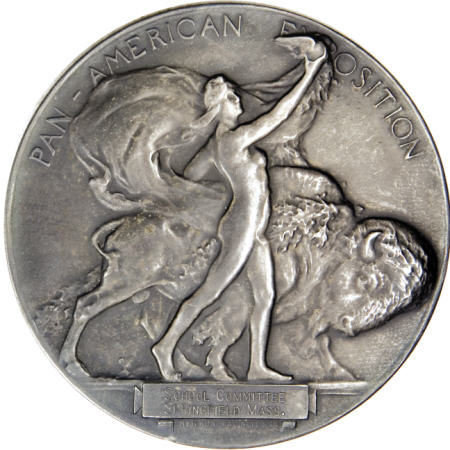Award medals were presented in bronze, silver and gilt bronze. These award medals are interesting and beautiful. The medals measure 64mm and were designed by Hermon McNeil. All these medals are rare. There were 887 gold (only 3 known in real gold) 1,159 silver ( only 4 or 5 known in real silver), and 1,147 bronze medals. If you have one of these medals, please visit the registry of the 1901 Pan-American Exposition medals to make sure yours is list.
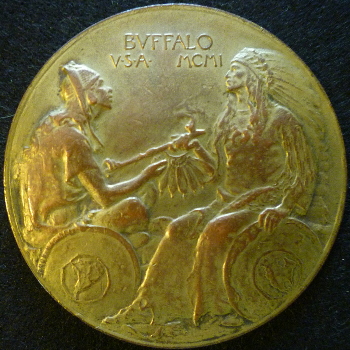
1901 Gilt Bronze Award Medal
This is the gilt bronze award medal. Hermon A. MacNeil designed Medallion for the Pan American Exposition. a Bronze Pan-American Exposition Medal designed by Hermon A. MacNeil. MacNeil is known as the designer of the Standing Liberty Quarter.
The obverse side of the medal shows a striking image of two figures, one seated and one kneeling, with the inscription “BUFFALO VSA MCMI” above them, which translates from Latin numerals to “Buffalo USA 1901”.
The seated figure, adorned with a headdress, represents a Native American, a symbol often used to represent the Americas in that period. The kneeling figure appears to be offering a branch or plant to the seated figure, possibly representing the exchange of culture and knowledge between different peoples or the sharing of the land’s natural resources. Catelog reference for Gold is: 1901 NY L-TM103 PAN-AM EXPO-BUFFALO, GOLD 64mm MS Catelog reference for Gilt is: 1901 NY L-TM103 PAN-AM EXPO-BUFFALO, GILT 64mm MS https://www.ngccoin.com/coin-explorer/united-states/tokens-and-medals/pan-american-exposition-lavin/890006/1901-ny-l-tm103-pan-am-expo-buffalo-gilt-64mm-ms/
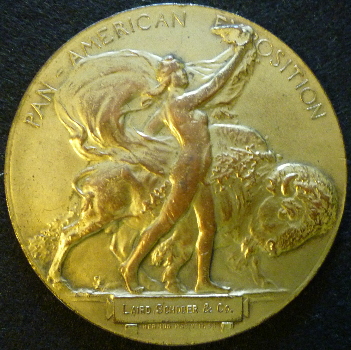
1901 Gilt Bronze Award Medal
Reverse side of the gilt bronze award medal. The Obverse is Liberty and a Buffalo and on the Reverse is a South American Native American smoking a peace pipe with a North American Native American. The medal measures 2 1/2 inches in diameter. This medal was manufactured by the Gorham Silver Co. This one is gilt.
The reverse side of this gilted award medal from the 1901 Pan-American Exposition depicts a dynamic and symbolic scene. The central figure is a woman in full stride, holding aloft a torch, which is a classic symbol of enlightenment and progress. This allegorical figure may represent the concept of progress or the spirit of the Pan-American Union, which aimed to improve cooperation and development within the Western Hemisphere.
Accompanying the female figure is an American bison, also known as a buffalo, which is a powerful symbol of the American West and a nod to the exposition’s host city, Buffalo, New York. The bison’s presence on the medal suggests themes of the untamed American landscape and the nation’s expansion and progress.
The text “PAN-AMERICAN EXPOSITION” is clearly inscribed above the figures, identifying the event that the medal commemorates. Below the image, the maker’s mark “LORDS BALDNER & CO. PHILADELPHIA” indicates the manufacturer of the medal.
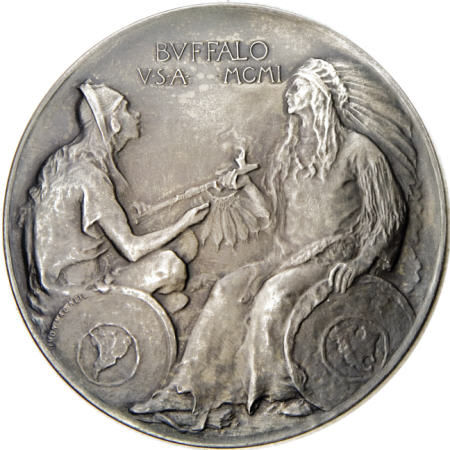
1901 Silver Award Medal
Silver award medal. The silver medal from the 1901 NY Expo is very rare and valuable. This Gorham made silver award medal is same design as described above for the bronze medal. The catelog reference per NGC for this silver medal is: 1901 NY L-TM103 PAN-AM EXPO-BUFFALO, AR https://www.ngccoin.com/coin-explorer/united-states/tokens-and-medals/pan-american-exposition-lavin/890007/1901-ny-l-tm103-pan-am-expo-buffalo-ar-64mm-ms/
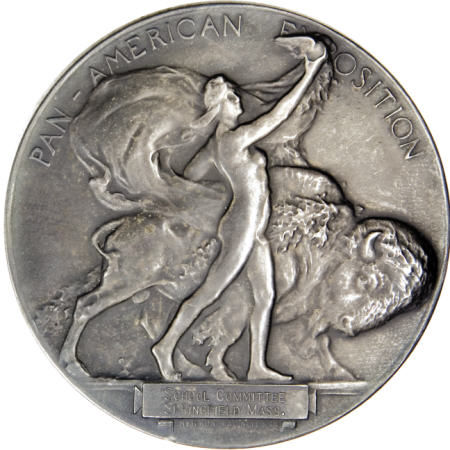
1901 Silver Award Medal
Beautiful reverse side of Silver award medal.

1901 Silver Award Medal
Beautiful toned reverse side of Silver award medal.
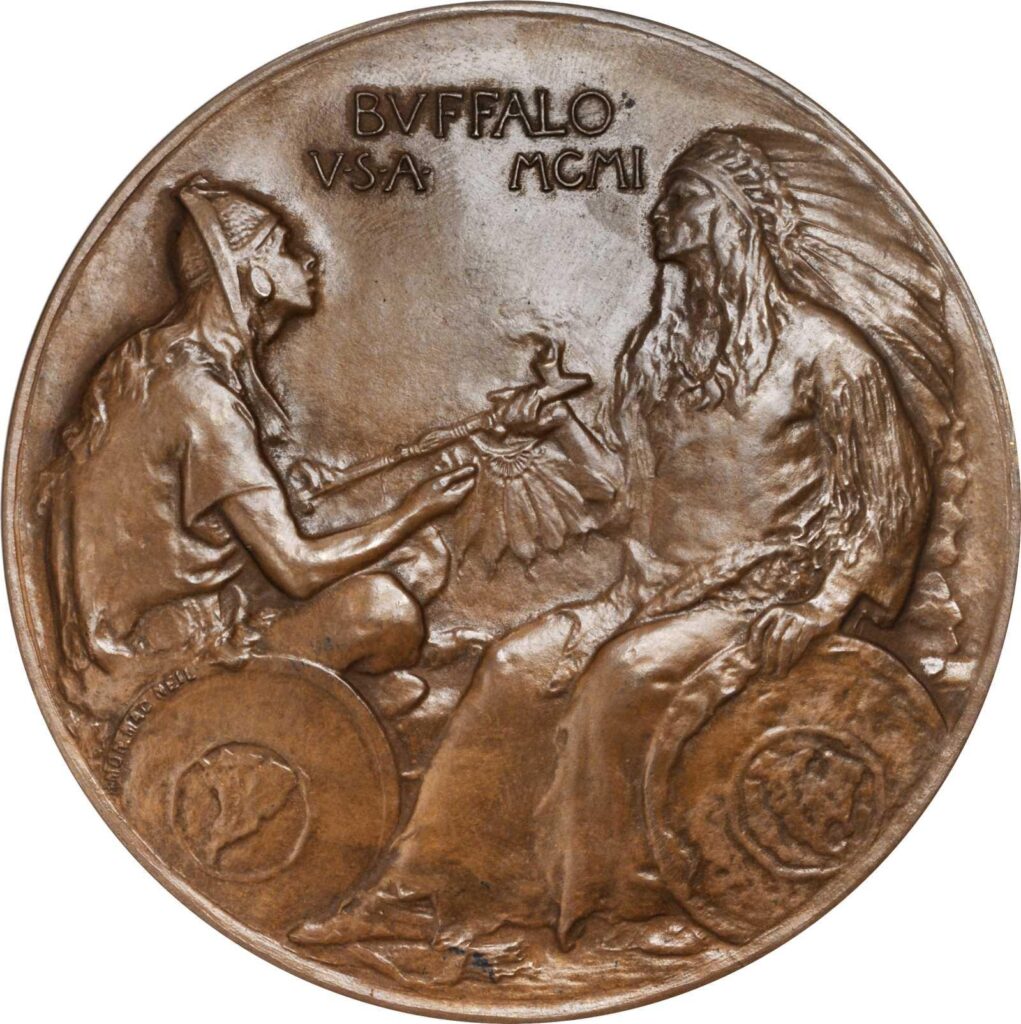
1901 Bronze Award Medal
Catelog reference for bronze award medal is: 1901 NY L-TM103 PAN-AM EXPO-BUFFALO 64mm MS https://www.ngccoin.com/coin-explorer/united-states/tokens-and-medals/pan-american-exposition-lavin/890050/1901-ny-l-tm103-pan-am-expo-buffalo-64mm-ms/
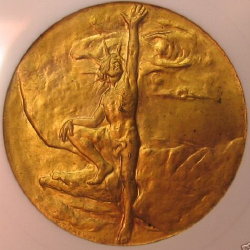
1901 Bronze Official Medal
1901 NY HK-289 SC$1 Pan American Exposition Official Medal.
The asking prices for this medal seems to be all over the place of Ebay. So do your research before buying. Note that this medal also comes in silver: 1901 Pan-American Exposition Silver Medal HK-287 So-Called Dollar
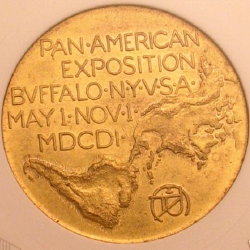
1901 Bronze Official Medal
1901 NY HK-289 SC$1 Pan American Exposition Official Medal
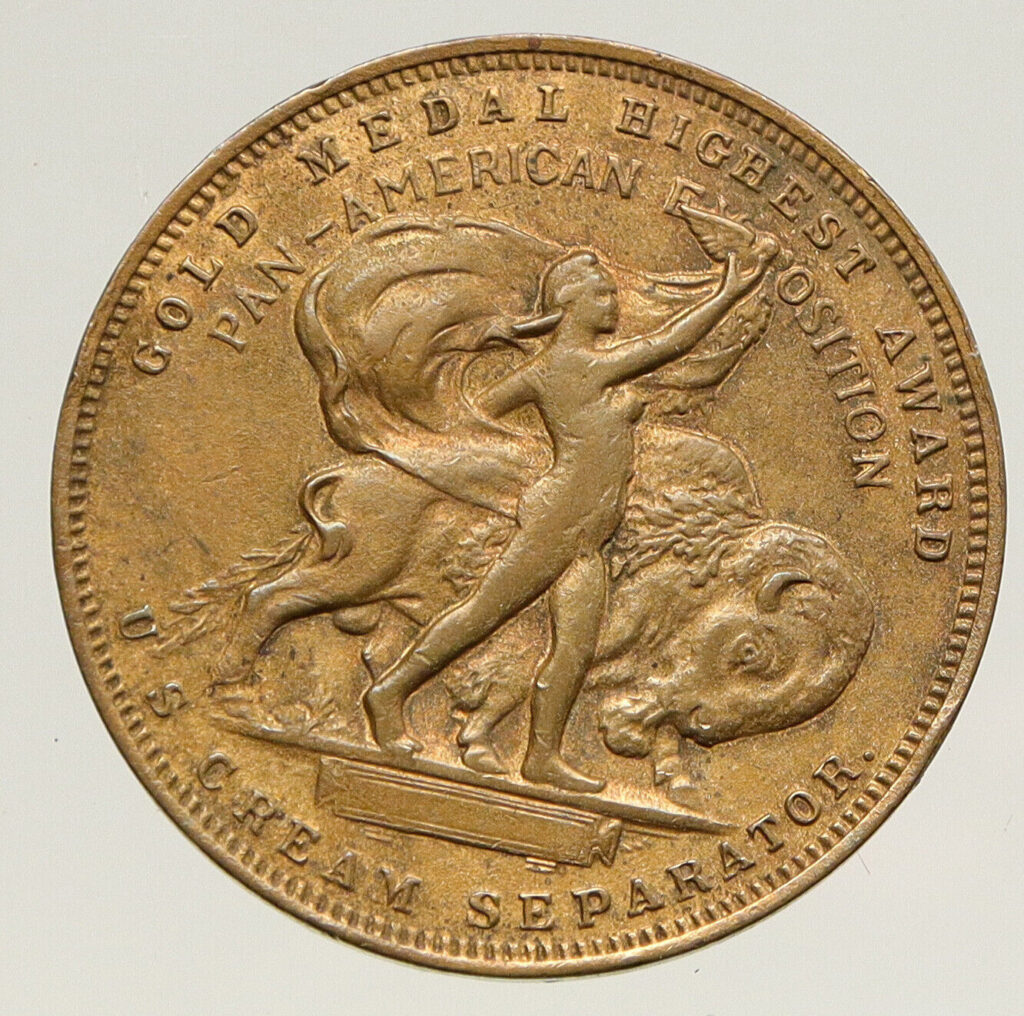
1901 US Buffalo NY Panamerican WORLD EXPO GOLD CREAM Old So Called Dollar
NOTE: This is not the real gold medal, just an advertising token and there are many of same. Don’t be fooled into thinking this was the award gold medal.
GOLD MEDAL HIGHEST AWARD PAN-AMERICAN EXPOSITION U S CREAM SEPARATOR., Mercury holding bird with flowing scarf enveloping bull rushing right on platform.
About The 1901 Pan-American Exposition
The Pan-American Exposition was a World’s Fair held in Buffalo, New York, United States, from May 1 through November 2, 1901 with the purpose of promoting trade and relationships with our Pan-American neighbors. Cayuga Island was initially chosen as the place to hold the Exposition because of the island’s proximity to Niagara Falls, which was a huge tourist attraction. But when the Spanish-American War broke out in 1898, all plans were put on hold.
After the war, there was a heated rivalry between Buffalo and Niagara Falls over the location. Buffalo won out for two main reasons. First, Buffalo had a much larger population — with roughly 350,000 people, it was the eighth-largest city in the United States. Second, Buffalo had better rail connections — the city was within a day’s journey by railroad for over 40 million people. In July 1898, Congress pledged $500,000 for the Exposition to be held at Buffalo.
The exposition is most remembered because U.S. President William McKinley was shot by an anarchist, Leon Czolgosz, on September 6, 1901.
The newly-developed X-ray machine was displayed at the fair, but doctors were reluctant to use it on McKinley to search for the bullet because they did not know what side effects it may have had on him. Also, ironically, the operating room at the exposition’s emergency hospital did not have any electric lighting, even though the exteriors of many of the buildings were covered with thousands of light bulbs. Doctors used a pan to reflect sunlight onto the operating table as they treated McKinley’s wounds.
When the fair ended, the buildings were demolished and the grounds were cleared and subdivided for residential streets. A boulder marking the site of McKinley’s assassination was placed in a grassy median on Fordham Drive in Buffalo. The sole surviving structure, the New York State building, was designed to permanently outlast the Exposition and be used by the Buffalo and Erie County Historical Society as their headquarters. It continues to do so today and can be visited on Nottingham Terrace in Buffalo. source: www.wikipedia.org among others
